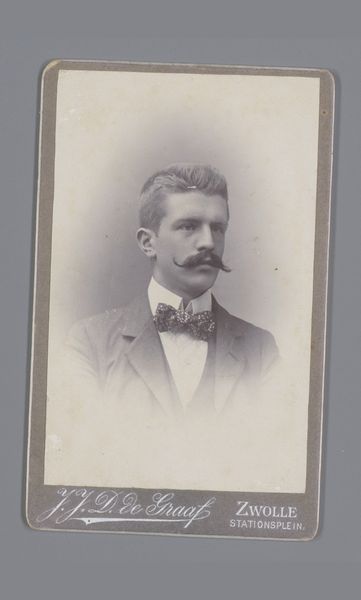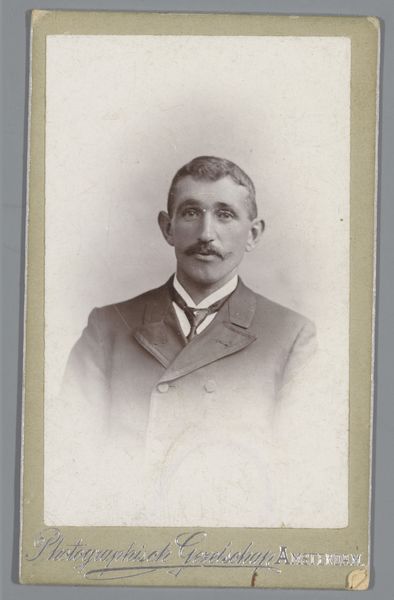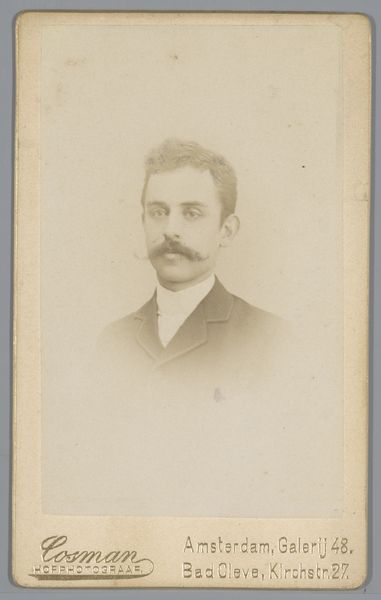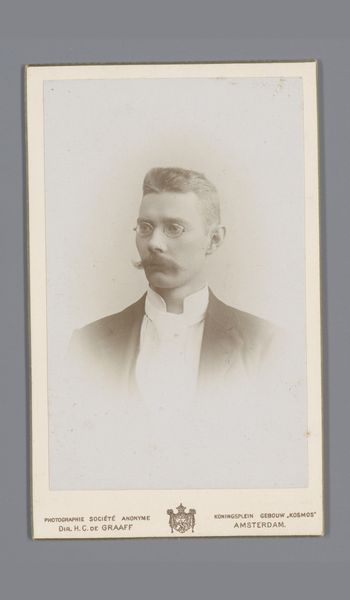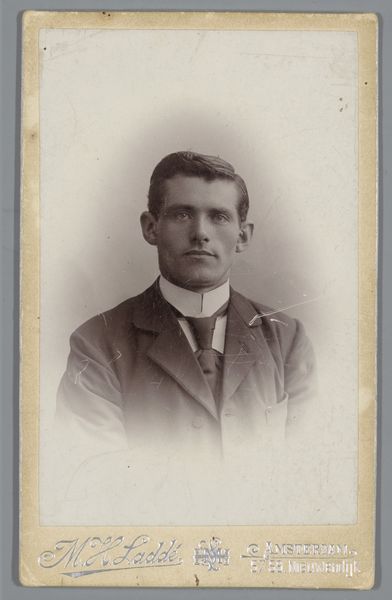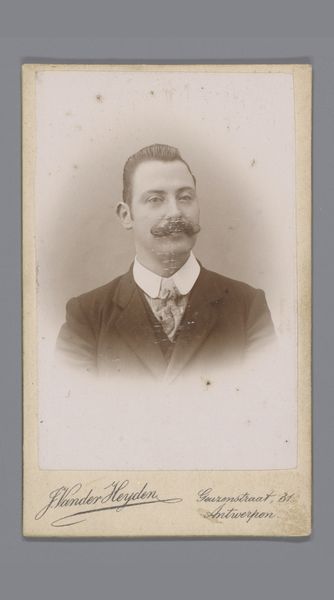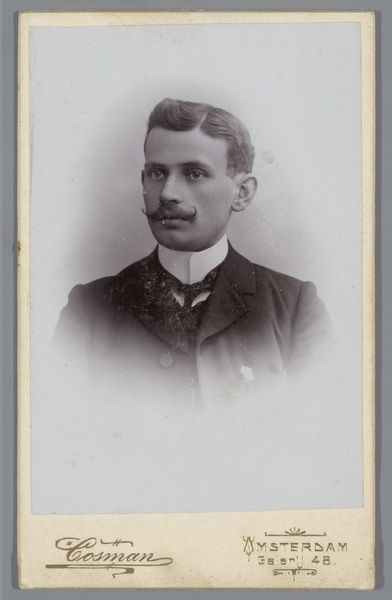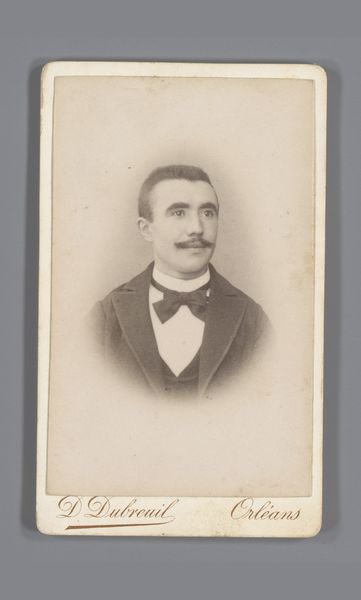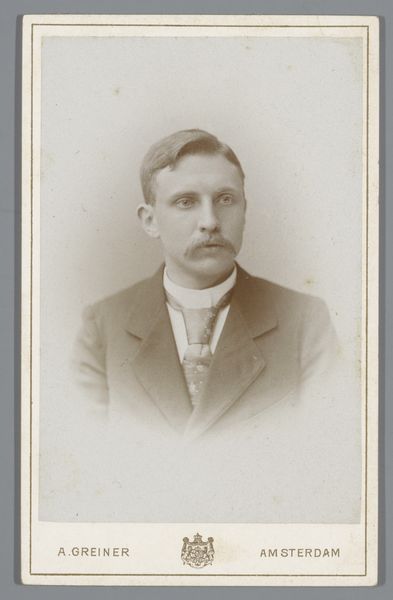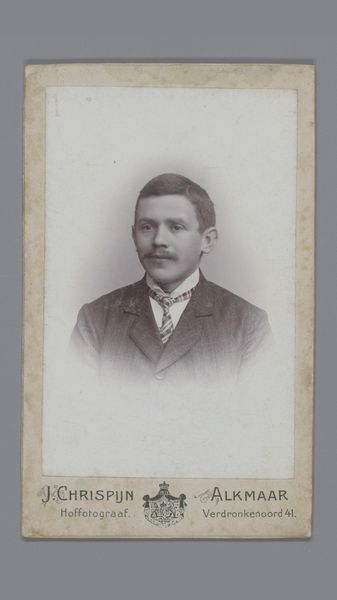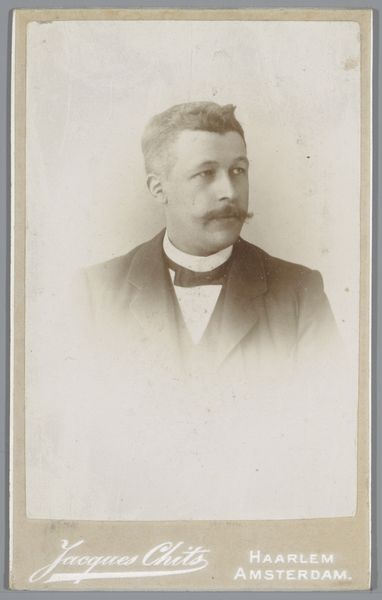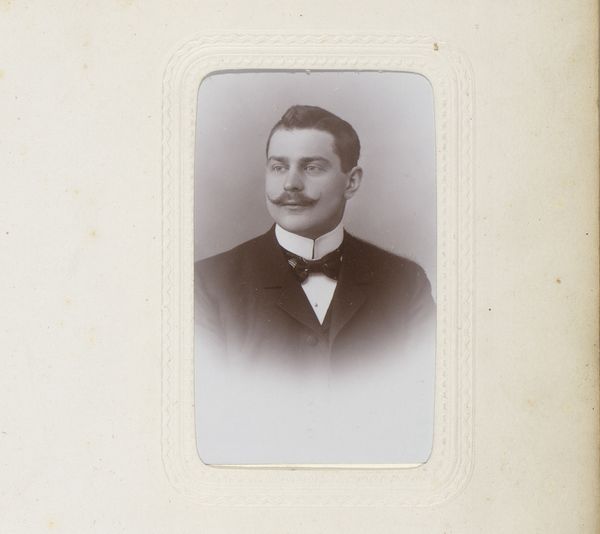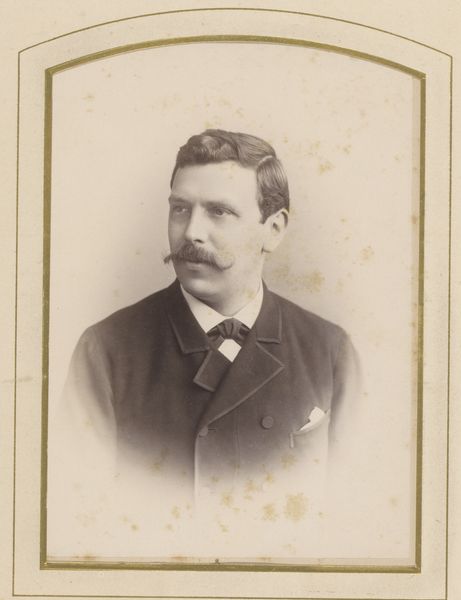
photography
#
portrait
#
photography
#
historical fashion
Dimensions: length 104 mm, width 62 mm
Copyright: Rijks Museum: Open Domain
Curator: This is "Portret van een onbekende man", a photograph created sometime between 1882 and 1902 by Georges Raynaud. Editor: He has such a reserved, dignified expression. It’s as if he's consciously crafting this image for posterity. I'm particularly drawn to the details of his dark suit— the lapel design, and the muted tones lend an air of formality. Curator: Exactly. Looking at this material object, a photographic print mounted on card stock, it's vital to remember photography’s burgeoning democratization during that era. Studios like Raynaud in Anvers mass-produced portraits, impacting societal perceptions of image-making, identity and even ideas around beauty. The question of who paid for it, where they came from is important here. Editor: Absolutely, but those are elusive. For me the careful posing, along with his moustache and collar point directly to an attempt to embody a particular social role and cultural aesthetic. There’s a strong sense of projecting an ideal—almost performing it. Curator: True, the performance aspects are visible, but so are traces of material labour and production, each impression is slightly different depending on materials, paper stocks etc, marking it unique in its seriality. Were photographs considered high art or craft back then? It questions hierarchies that placed painting on the very top. Editor: I see the artistic element in its own right and in the manipulation of imagery to create symbolic impact. While this specific man’s identity is not fully know, he symbolizes his era: a figure emerging from the rising middle class with enough wherewithal to engage with photography. I mean it signifies more than just being documentation – it’s performative. Curator: We are circling each other with interesting insights. I will add to this that photographs changed our relationship to documentation, challenging painting’s supremacy over representation and creating new value hierarchies within representation itself. I now question whether such portraits could only emerge during moments of material transformation, challenging conventional value boundaries. Editor: I am intrigued at what kind of man he was, as the power of historical images relies exactly in this balance: what we learn about their sitters, and about what remains mysteriously closed forever. Curator: A great reminder that an artwork's context can illuminate not only how the portrait came to be but how its meanings keep transforming and opening.
Comments
No comments
Be the first to comment and join the conversation on the ultimate creative platform.
